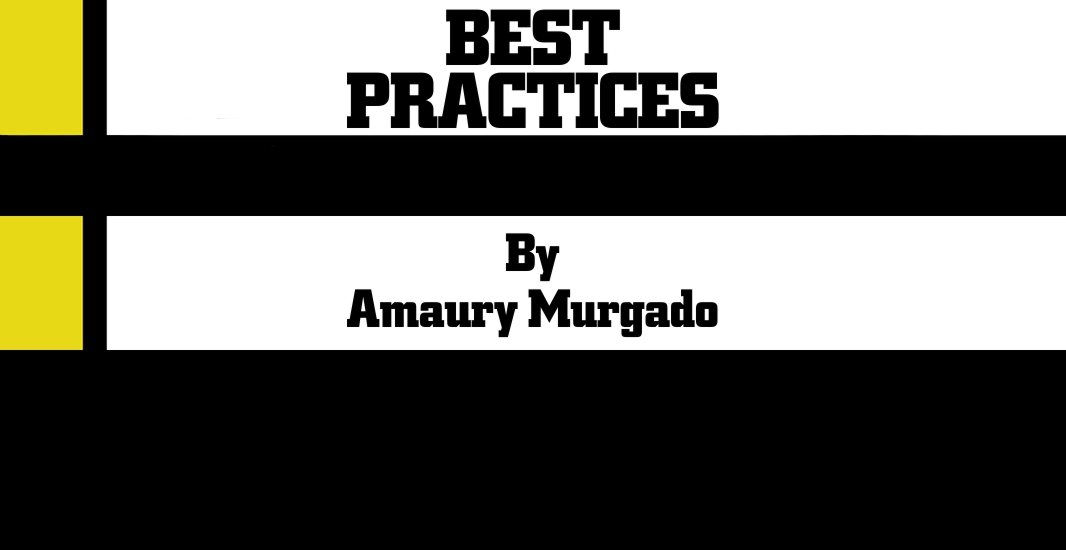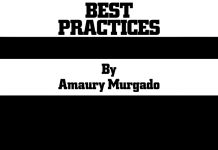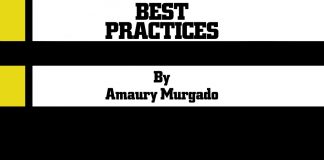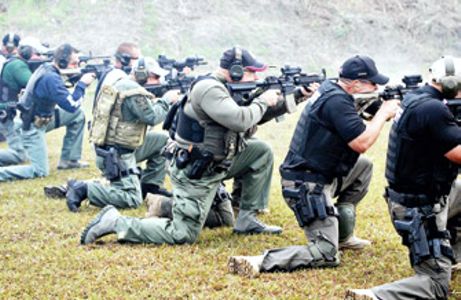
Many in law enforcement view training as something to try to get out of. Since it’s often seen as a necessary evil, it’s always one of the easiest things to cut when budgets get lean. That’s a shame because training doesn’t have to be expensive; it just has to be good. If more people experienced good training I think they’d see its value. Th e essential missing
component is usually a sense of purpose.
For example, any experienced firearms instructor will tell you they could accomplish more with 50 rounds of ammunition doing a ball and dummy drill, than burning up hundreds of rounds just blowing holes in paper. It’s not so much what you do that’s important but why. The older I get, the more I realize that formalizing the question is more important than getting the answer. If you have an idea of why you’re conducting the training, it will all come together. If not, it could be a mess and a waste of everyone’s time. The term GIGO (garbage in, garbage out) says it all.
It’s The Why That Matters Most
Many years ago I was invited to a newly formed specialty unit’s training meeting. The team’s command staff was feverously debating what to teach in a two-day, 16-hour training block they were planning. They had the 16 hours broken down on a chart and they were steadily filling in the open slots willy-nilly with all sorts of cool sounding topics. It was
a hodgepodge of instruction that looked really good on paper but made no sense when you tried to string it together. I couldn’t figure out the direction that they were going in, let
alone their final destination.
Unable to keep my mouth shut, I stopped them after awhile and asked, “What do you want the students to be able to do after the 16 hours of training; what’s your overall training goal?” I immediately got the “Why are you questioning me?” look from the number one guy and the others present just started looking at each other as if I were speaking Chinese.
I told them that they were putting the cart before the horse by detailing the “what” of their training without having identified the “why.” I advised them that in stating the
why (goal), the what (objectives) would follow naturally. They reluctantly took my advice. An hour later, after identifying some basic goals, the team pounded out a list of objectives that became the standard for the future basic training of their unit. Once the goals had been established and the parameters set, it became an easy conversation. It’s similar to fi guring out what you have when you arrive on scene. Once you identify the situation, the rest is paperwork and following procedure. The hard part is in the identification; training is no different.
Much to my chagrin, I was never invited back to another planning meeting. Perhaps someone got embarrassed or they just no longer needed my help. The world may never know…
Setting Specific Goals
As demonstrated above, setting up your goals properly makes coming up with the training elements very easy. Your training goal should be a statement of intent. If you are not defining your goals and therefore working toward them, you are merely treading water when you could be swimming.
I liken the whole goal and objective issue to a road trip. Like a road trip, with training you have a final destination, or goal, which is further broken down into the legs of your
journey, or objectives. The complexity of the goal will establish how many objectives you need.
Here are examples of law enforcement training goals:
Goal 1: Th e student will demonstrate the three basic blocks used in police combatives.
Goal 2: Th e student will demonstrate how to write a police narrative.
The goal is a clear, succinct statement that describes what you want to accomplish. The next step is how you are going to get there by way of objectives.
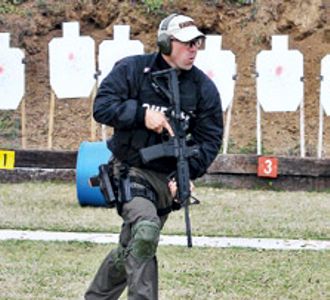
range training much more useful.
Objectives
Each objective is a part of the whole, one step toward completing the goal. The objective
is also a succinct statement describing what you want to accomplish. But whereas the goal is more of a broad statement, each objective needs to detail a specific part of that overall task. Let’s add some objectives to the goals stated earlier to further clarify the examples:
Example 1
Goal: The student will demonstrate the three basic blocks used in police combatives.
Objective 1: The student will demonstrate the use of the high block in a combatives situation where an assailant throws a strike to the area above the student’s shoulders.
Objective 2: The student will demonstrate the use of the middle block in a combatives
situation where an assailant throws a strike to the area between the student’s shoulders and waist.
Objective 3: Th e student will demonstrate the use of the low block in a combatives situation where an assailant throws a strike to the area between the student’s waist and middle thigh.
Example 2
Goal: The student will demonstrate how to write a basic police narrative.
Objective 1: The student will use the police style of writing by following the writing sequence of how he got the call, what was said, what he saw, and what he did.
Objective 2: The student will use the journalistic approach by answering who, what, when, where, why, and how questions in the narrative.
Objective 3: The student will write three hand-written reports and three reports written on her computer for evaluation and critique.
As you can see, goals and objectives go hand in hand when establishing any type of training. You can’t have one without the other. Using goal-oriented training is the compass you need to keep going in the right direction.
Executing Short-term And Long-term Plans
Planning training doesn’t end with goals and objectives; that’s just the beginning. After you’ve established these guidelines, you need to create a lesson plan to tie them all together. The lesson plan further details the “how to do it” part of your training. It explains how to accomplish each objective; gives administrative instructions including the location, conditions, uniform, and equipment; and sets the tone for instruction so that each instructor
is teaching the same core material. It is imperative that all instructors maintain consistency throughout. The war stories can change but the core material can’t. Even if you are conducting training for the lowest common denominator, it has to fit both immediate and long-term goals.
TRAINING TIPS
1. Your training should be goal oriented.
2. A goal is the broad statement of what you want accomplished.
3. An objective is a specific step in accomplishing your goal.
4. Create a one-, three-, and five-yeartraining plan.
5. Watch out for the bean counter, politico, and Gadget Bob involved with training
In addition to immediate goals, you need to look at training your section for at least 12 months out in advance (roll call training, table top exercises, spot policy quizzes, etc.). If you are in charge of training for your entire agency, I suggest you accomplish long-term goals by creating a one-, three-, and five-year training plan. Regardless of what management level you work at, the training questions will always remain the same: What is it you want your officers to accomplish and what are the steps needed to for you to get them there?
Best of Intentions
You can always tell who makes the training decisions in your agency. If it’s someone whose main focus isn’t effective techniques, it shows. Even if you’re not the person in charge, make an effort to prevent certain misguided people from derailing a good training plan.
You can smell a bean counter or nontrainer a mile away. The bean counter emphasizes using the same free training that hasn’t changed in 20 years because for this person it’s a funding issue. On the other hand, the non-trainer makes decisions based on politics. According to this type of person, training should be about busy work or the bare bones minimum to meet requirements for state standards or accreditation.
The third type you have to watch out for are the Gadget Bobs of your agency. They
value having the newest and best above everything else. They spend precious time
and money in an effort to always change things for what they believe is the next
best thing. Why are you buying something new if the old one is working fine? Worse,
if you are always changing things and have no long-term goals, no one ever retains
anything. All the pretty gadgets and expensive training will get you nowhere if
no one remembers it a month later.
That’s the purpose of following a well thought out one-, three-, and five-year training plan that focuses on training essentials. It is much better to be proficient at five things than just familiar with 20.
Much to my agency’s credit, we have been following our focused training plan and we can see the results in our yearly block training and bi-monthly firearms range work. In our case, the end has justified the beginning.
Amaury Murgado is a retired Army Reserve Master Sergeant with more than 30 years
of experience in martial arts. He currently serves as the Special Operations Lieutenant
for the Osceola County Sheriff’s Office in Kissimmee, Florida.


